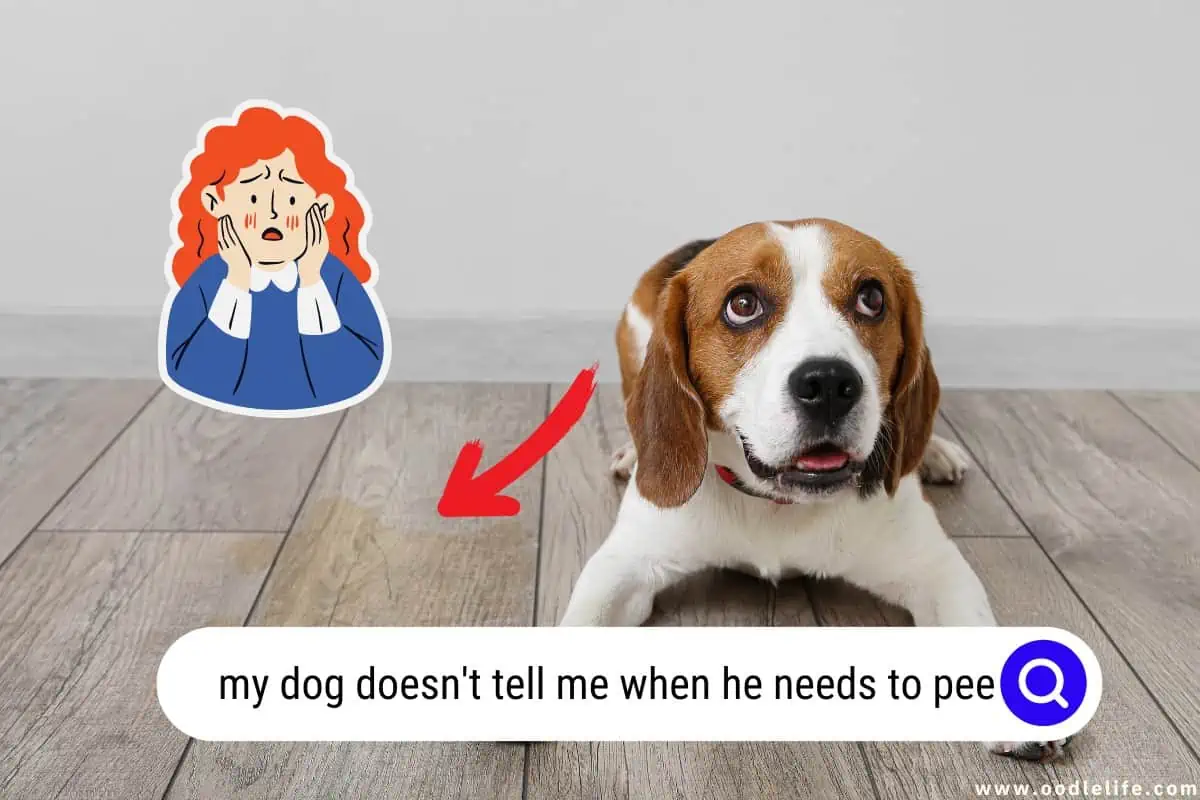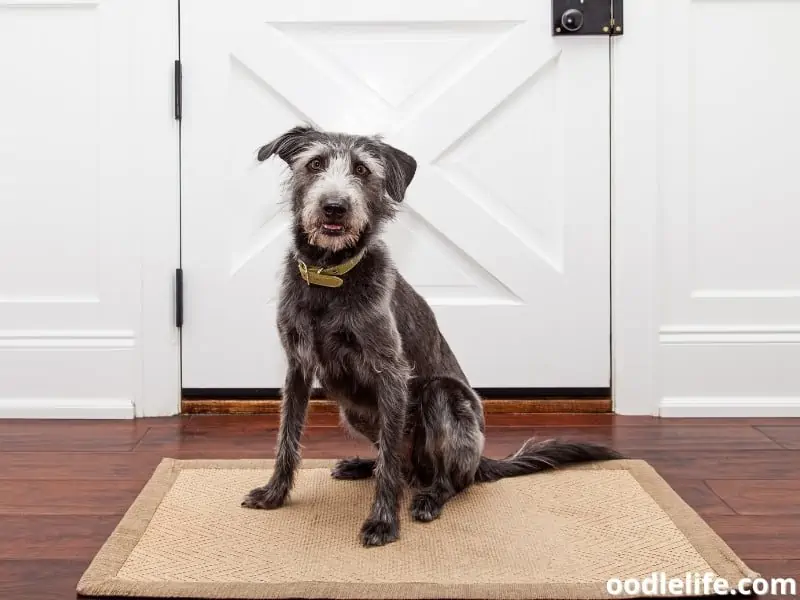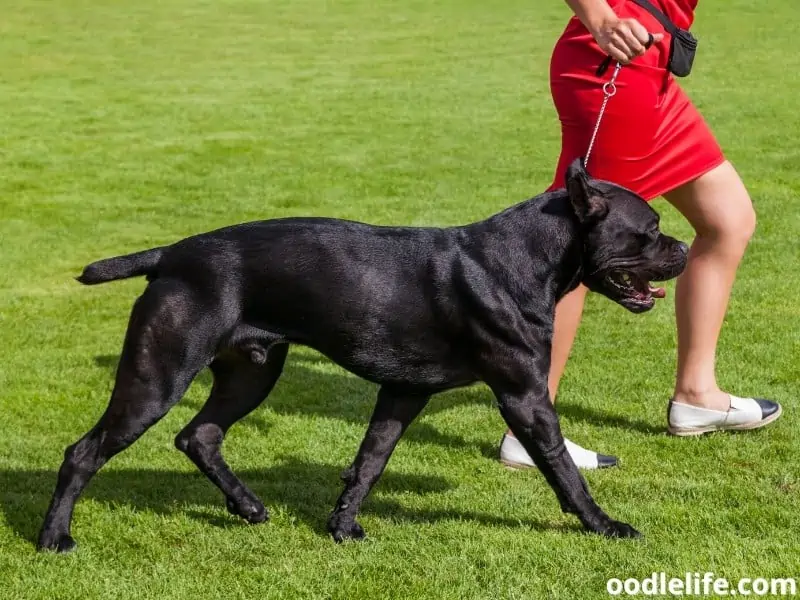My Dog Doesn’t Tell Me When He Needs to Pee
Imagine this: You’re enjoying a quiet evening at home when you suddenly notice a puddle in the corner, and it dawns on you that your beloved furry friend hasn’t indicated their need to pee. Don’t worry, you’re not alone in this dilemma.
Many dog owners face the challenge of their pets not communicating their need to relieve themselves.

In this article, we will explore some of the reasons why dogs may not signal their need to pee and discuss various techniques to teach them to do so. It’s time to say goodbye to unexpected puddles and hello to a more harmonious relationship with your four-legged companion.
Understanding Dog Communication
Dogs possess diverse body language that allows them to communicate their needs effectively. However, properly interpreting these signals is key for responsible dog owners.

While dogs can’t directly tell you when they need to pee, they often exhibit telltale behaviors. For instance, the dog might become agitated, circle around, sniff the floor, or head towards the door.
Integrating a signaling method, like hanging bells on the door, can facilitate clearer communication between the dog and the owner. As the dog learns to alert the owner by ringing the bells, those pesky ‘oops’ moments can be minimized!
Here’s a sprinkle of humor for the dog owners: dogs might not use words, but they certainly have their own ‘pee-mail’ network – hydrant by hydrant, bush by bush!
Reasons for Silent Signals
Age and Health Factors
As dogs age, their ability to communicate their needs may diminish. Health issues, such as urinary tract infections or cognitive decline, can also impede their ability to signal when they need to pee.

Young puppies, on the other hand, may not have developed the necessary communication skills yet. They may still be learning how to let their owners know when it’s time to go outside.
Training and Habits
Incomplete potty training can be a major factor in dogs not signaling their need to urinate. Without proper training, they might not understand that they should inform you before doing their business.

Additionally, if a dog has been allowed to pee inside the house or developed a habit of marking its territory, it may not realize that it should inform you of its needs. Breaking bad habits and reinforcing good ones can help your dog learn to communicate more effectively.
Remember, consistency in training and a schedule for feeding, walking, and bathroom breaks can significantly improve your dog’s ability to signal when it needs to pee.
Establishing a Potty Routine
Setting up a consistent potty routine for your dog is crucial to help them learn when and where to relieve themselves. This can decrease the chances of accidents inside the house and make life easier for both you and your furry friend.
Consistent Feeding Schedule
One of the essential elements of a successful potty routine is feeding your dog on a consistent schedule. This helps regulate their digestive system and ensures predictable potty timings. For instance, feeding your dog at the same time every morning and evening can help them anticipate when they’ll need to go out.

Frequent Potty Breaks
Another key aspect of establishing a potty routine is providing frequent potty breaks, especially during the early stages of training. Take your dog outside at regular intervals, such as after waking up, eating, playing, or before bedtime. This helps your dog understand when it’s time to do their business and reduces the chance of accidents indoors.

Designated Potty Area
Encourage your dog to use a specific area in the yard as their designated potty spot. This not only makes cleanup easier, but it also helps your dog associate that particular area with going to the bathroom. Over time, your dog will naturally gravitate towards this spot whenever they need to relieve themselves, making the entire process more manageable for both of you.

Overall, establishing a consistent potty routine for your dog requires patience, persistence, and empathy. Remember that your dog is learning a new behavior, and accidents might happen. Stay positive and reward your dog for their accomplishments along the way.
Soon enough, you’ll have a well-trained pup who can easily communicate their potty needs.
Training Techniques
Training your dog to notify you when they need to pee is essential to maintain a clean home and a happy relationship with your furry friend. This section will cover potty training basics, teaching potty signals, and using positive reinforcement.
Let’s dive into these techniques:
Potty Training Basics
Start by establishing a routine for your dog. Take them outside at regular intervals, like after meals, playtime, and before bedtime. Observe their behavior for signs they need to relieve themselves, such as sniffing, circling, or squatting.

Use a specific word or phrase, like “go potty,” to associate the action with the command.
Teaching Potty Signals
One popular potty signal is using bells on the door. To teach this, hang a bell near the door you use to let your dog out. Guide your dog to touch the bell with their paw or nose, and immediately reward them with a treat or praise.
With consistent practice, your dog will learn to ring the bell when they need to go outside.
Positive Reinforcement
When your dog successfully notifies you or goes potty outside, be sure to reward them with treats, praise, or playtime. Positive reinforcement encourages your dog to repeat this behavior and builds their understanding that notifying you for potty breaks is desirable.

Combining potty training basics, teaching potty signals, and using positive reinforcement helps build consistent communication between you and your dog, ensuring a cleaner home and a happy furry companion.
Preventing Accidents
It’s important to take proactive measures to prevent accidents and help your dog communicate their need to pee.
Supervision and Confinement
One way to prevent accidents is through close supervision. Keep your dog attached to you with a leash and take them out on a regular schedule for potty breaks. Dogs are creatures of habit and having a consistent schedule helps avoid accidents.

When you can’t supervise your dog, kindly confine them to a crate. This is an effective way to prevent accidents and maintain a clean living space.
Addressing Medical Issues
Sometimes, medical issues can make it difficult for a dog to communicate their need to pee. If your dog is having trouble urinating or experiences other unusual symptoms, it’s essential to consult your veterinarian. They may perform tests like urinalysis, urine culture, blood work, X-rays, or ultrasounds to diagnose and address the issue.

By practicing supervision, confinement, and being aware of potential medical issues, you can make it easier for your dog to let you know when they need to pee and prevent accidents in the process.
Conclusion
Thus, we can see that teaching a dog to communicate its need to pee may require patience and consistency. Using techniques such as putting your dog on a schedule and positive reinforcement, can lead to success in this endeavor. Remember not to stress your pup, as it should be a fun and bonding process.
When Fido finally learns to signal that it’s time to use the bathroom, you’ll benefit from a happier, cleaner home environment. Now, just remember to grab that umbrella for those rainy day potty breaks!